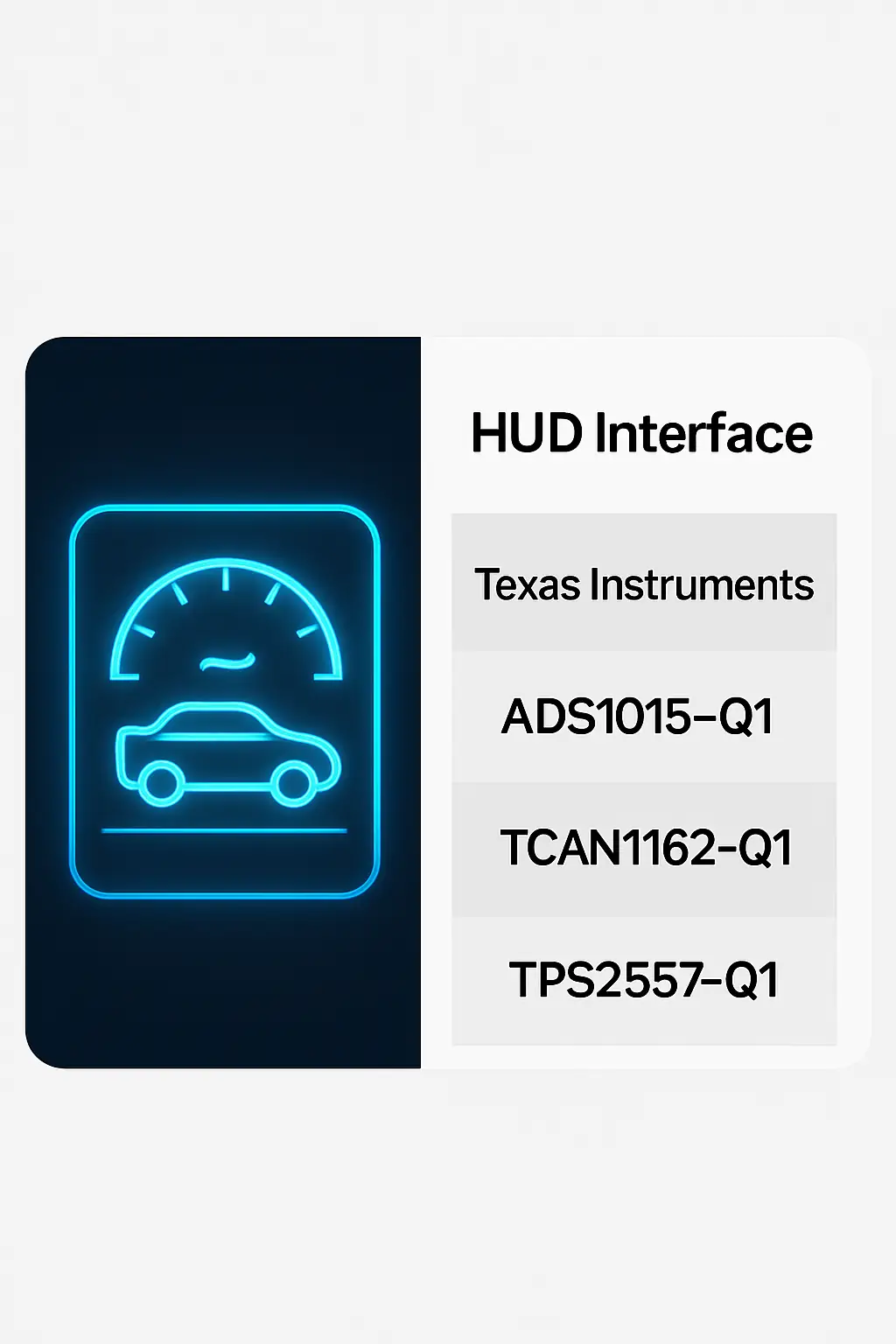HUD Interface
The HUD Interface is an advanced automotive electronic system designed to project essential driving information onto the windshield, allowing drivers to keep their eyes on the road. It is part of the broader Infotainment & Digital Cockpit category, specifically falling under Digital Cluster & Display within the Automotive Electronics domain. This technology enhances driver safety and convenience by displaying critical data such as speed, navigation directions, and warning alerts in the driver's line of sight.
The HUD (Head-Up Display) interface integrates seamlessly with the vehicle’s onboard systems, including the instrument cluster, GPS, and driver assistance features. It uses a combination of optical projection and transparent glass to create a virtual display that appears at a distance, reducing the need for frequent glances at the dashboard. This feature is especially beneficial in high-speed driving or complex traffic environments.
Common applications of the HUD interface include luxury vehicles, advanced driver-assistance systems (ADAS), and smart cars equipped with digital cockpits. It is widely used in modern automobiles to improve situational awareness, reduce driver distraction, and enhance the overall driving experience. The interface can also support augmented reality (AR) features, overlaying real-time navigation and object recognition onto the road ahead.
Designed for reliability and clarity, the HUD interface ensures that drivers receive accurate and timely information without compromising focus. Its integration into the digital cockpit reflects the growing trend of connected and intelligent vehicles, offering a futuristic and user-friendly driving environment.
Details
HUD Interface

Related Parts
| Series Name | Description | Manufacturer Name | Attribute Description |
|---|---|---|---|
| Texas Instruments | 12-bit ADC, 3300 SPS, 4-channel, I2C interface, single-ended/pseudo-differential inputs, internal reference, oscillator, and programmable gain amplifier. | ||
| Texas Instruments | 3.3V CAN FD transceiver, 8Mbps data rate, ISO 11898-2:2016 compliant, -40°C to +125°C operating temperature, integrated VIO regulator, low-power standby mode, high EMC performance, suitable for automotive applications. | ||
| Texas Instruments | 36V, 2.5A, adjustable current limit, thermal shutdown, reverse current blocking, wide input voltage range, automotive grade, integrated FET, overcurrent protection. |








.png?x-oss-process=image/format,webp/resize,h_32)










